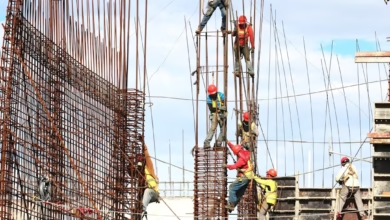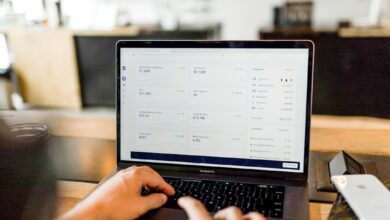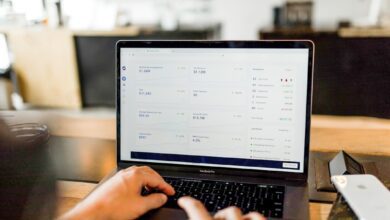Metals in Motion: Navigating the Intersection of Industry, Investment, and Sustainability

In today's rapidly evolving economic landscape, the interplay between industrial demand and investment strategies surrounding metals has become increasingly significant. Precious and industrial metals not only serve as crucial components in various technologies and manufacturing processes but also play a pivotal role in investment portfolios, offering diversification and a hedge against inflation. This article explores the multifaceted roles of metals such as silver, copper, and rare earth elements, examining how their prices reflect broader economic trends and are influenced by emerging green energy technologies. Additionally, we will delve into the investment viability of platinum and palladium, assess the future of aluminum in sustainable practices, and analyze the impact of mining regulations on metal prices. As we navigate this intricate web, we aim to provide insights into how these metals can shape both industrial growth and investment opportunities in an increasingly complex market.
- 1. "Silver's Dual Role: Navigating Industrial Demand and Investment Appeal"
- 2. "Copper Prices as Economic Barometers: Understanding Global Market Dynamics"
- 3. "The Green Revolution: How Renewable Energy Shapes Rare Earth Metal Demand"
1. "Silver's Dual Role: Navigating Industrial Demand and Investment Appeal"
Silver plays a unique and pivotal role in both industrial applications and investment markets, making it a multifaceted asset with varied implications for investors and manufacturers alike. On the industrial side, silver is valued for its exceptional electrical conductivity, thermal conductivity, and reflectivity. These properties make it indispensable in a range of applications, from electronics and solar panels to medical devices and batteries. The growing emphasis on renewable energy technologies, particularly solar energy, has significantly bolstered silver demand. As solar panels become more widely adopted, the need for silver, which is used in the conductive paste of photovoltaic cells, continues to rise, positioning silver as a critical component in the transition to a green economy.
In contrast, silver's appeal as an investment vehicle is deeply rooted in its historical significance as a store of value. Investors often turn to silver during periods of economic uncertainty or inflation, viewing it as a hedge against currency devaluation. The dual nature of silver allows it to attract both industrial buyers and investors, creating a unique dynamic in its pricing. When industrial demand surges, it can lead to increases in silver prices, which in turn attracts more investment interest. Conversely, in times of market volatility, the demand for silver as a safe-haven asset can drive prices higher, independent of industrial consumption.
The interplay between these two sectors—industrial demand and investment appeal—can create fluctuations in silver prices. For instance, during economic expansions, increased industrial activity can elevate silver prices, while during downturns, investors may flock to silver as a protective asset, further driving its value. This dual role not only highlights silver's versatility but also underscores the importance of understanding both the industrial and investment landscapes when considering silver as a component of a diversified portfolio. As global economic conditions evolve, silver's unique position will continue to navigate the balance between its industrial necessity and its investment allure.
2. "Copper Prices as Economic Barometers: Understanding Global Market Dynamics"
Copper prices are often viewed as a barometer for global economic health due to the metal's widespread use in various industries, including construction, electrical, and manufacturing. As a conductor of electricity and a vital material for infrastructure development, copper's demand is closely tied to economic activity. When economies are growing, the need for copper increases, leading to higher prices. Conversely, during economic downturns, demand typically declines, which can result in falling prices.
Several factors influence copper prices and their correlation with economic indicators. For instance, construction activity is a significant driver; when new housing starts increase, so does the demand for copper wiring and plumbing. Similarly, industrial production levels and manufacturing output are critical metrics that impact copper consumption. As countries like China—one of the largest consumers of copper—experience fluctuations in growth, global copper prices often respond accordingly.
Additionally, geopolitical factors and trade policies can create volatility in copper markets. Tariffs, trade agreements, and mining regulations can affect supply chains, leading to price fluctuations. For example, any disruption in major copper-producing countries, such as Chile or Peru, can lead to supply shortages, driving prices up regardless of underlying demand.
Investors often turn to copper as an indicator of potential economic expansion or contraction. When prices are rising, it signals robust economic activity, while a decline may suggest a slowdown. Analysts and investors closely monitor copper price trends alongside other economic indicators, including GDP growth rates, manufacturing indices, and employment data, to gain insights into the overall health of the global economy.
In summary, copper prices serve as a crucial economic indicator, reflecting the dynamics of global markets and providing insights into future economic conditions. Understanding these price movements can aid investors in making informed decisions and anticipating market trends.
3. "The Green Revolution: How Renewable Energy Shapes Rare Earth Metal Demand"
The transition to renewable energy technologies is significantly influencing the demand for rare earth metals, which are critical for manufacturing various components in green energy systems. As governments and industries pivot towards sustainable solutions, the reliance on these metals, such as neodymium, dysprosium, and lithium, increases due to their essential roles in the production of magnets, batteries, and electronic devices.
Wind turbines, for instance, utilize neodymium-iron-boron magnets, which are vital for enhancing efficiency and reducing the size of generators. Similarly, lithium is a key component in rechargeable batteries used in electric vehicles (EVs) and energy storage systems, both of which are crucial for managing energy supply and demand in a renewable landscape. The growing adoption of EVs and the expansion of renewable energy infrastructure are driving a surge in demand for these metals, leading to heightened interest from investors and concerns about supply chain sustainability.
However, the supply of rare earth metals is often concentrated in specific geographic regions, primarily China, which dominates global production. This concentration raises concerns about potential supply disruptions due to geopolitical tensions, environmental regulations, and mining practices. As such, there is an increasing push for recycling and sustainable sourcing methods to mitigate risks associated with supply chains and environmental impact.
In summary, the Green Revolution not only catalyzes the demand for rare earth metals but also prompts a reevaluation of sourcing strategies and investment in alternative technologies. As the world continues to embrace renewable energy, the role of these metals in the transition will be pivotal, shaping both market dynamics and environmental policies.
In conclusion, the multifaceted nature of metals in today's economy underscores their importance across various sectors, from industrial applications to investment opportunities. Silver’s dual role highlights its unique position as both a critical industrial resource and a sought-after investment asset. Similarly, copper prices serve as a reliable indicator of global economic health, reflecting underlying market dynamics and consumer confidence. The growing emphasis on green energy technologies is reshaping the demand landscape for rare earth metals, further emphasizing the interconnectedness of sustainability and resource management.
Investors must weigh the merits of platinum versus palladium, each presenting distinct advantages and challenges within the precious metals market. As we explore the role of metals in diversifying investment portfolios, it becomes clear that strategic allocation can enhance resilience against economic fluctuations, particularly in times of inflation, which significantly impacts metal prices.
Looking ahead, aluminum’s potential in a sustainable economy is promising, especially as industries seek lightweight and recyclable materials. However, the impact of mining regulations cannot be overlooked, as they play a crucial role in shaping market dynamics and influencing prices. Ultimately, understanding these intricate relationships is essential for stakeholders aiming to navigate the complexities of the metals market, ensuring informed decisions in an ever-evolving landscape.





